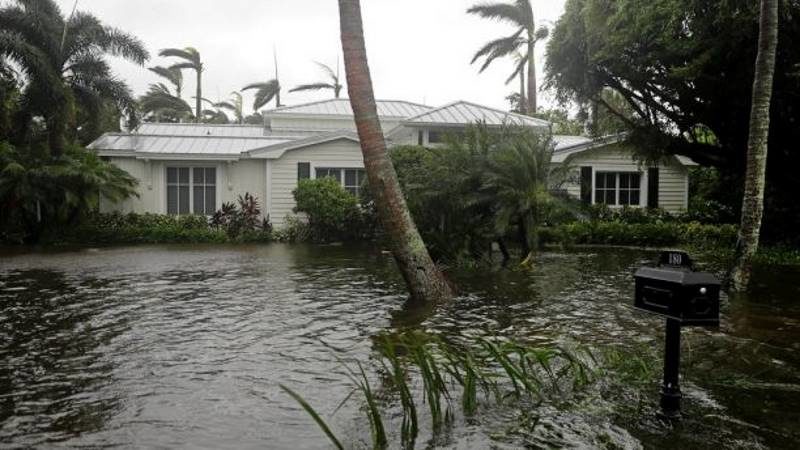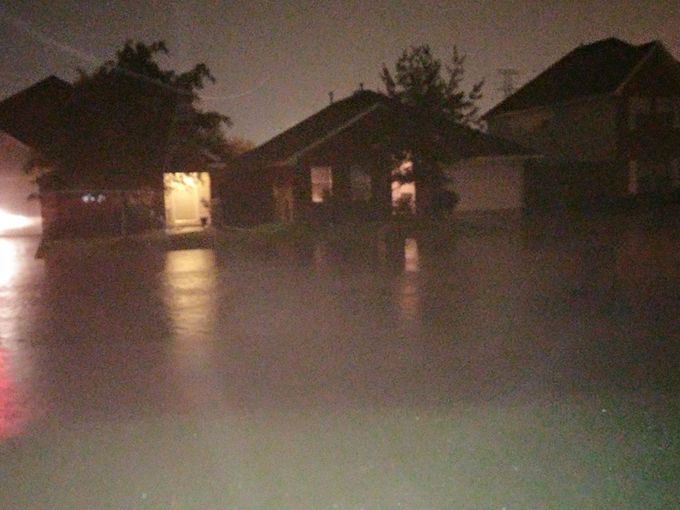That number is roughly four times the original prediction because new disaster zones were designated and more homes flooded when officials released water from reservoirs to protect dams, according to CNBC's Diana Olick. In total, the number of mortgaged properties in Texas disaster zones is 1.18 million, with Black Knight adding that Houston disaster zones contain twice as many mortgaged properties than Katrina zones, with four times the unpaid principal balance.
Putting the Harvey damange in context, after Hurricane Katrina mortgage delinquencies in Louisiana and Mississippi disaster areas spiked by 25%. The same could happen in Houston, as borrowers without flood insurance weigh their options and decide to walk away from the property. While they will get some federal relief, if rebuilding would cost more than the principal in their homes, they could decide to walk away according to Olick.

According to a preliminary analysis by Black Knight released today, Florida FEMA-designated disaster areas related to Hurricane Irma include a whopping 3.1 million mortgaged properties. As Black Knight's EVP Ben Graboske explained, both the number of mortgages and the unpaid principal balances of those mortgages in FEMA-designated Irma disaster areas are significantly larger than in the areas impacted recently by Hurricane Harvey.
Quantifying the damage, Black Knight calculates that Irma-related disaster areas contain nearly three times as many mortgaged properties as those connected to Hurricane Harvey, and nearly seven times as many as those connected to Hurricane Katrina in 2005. In dollar terms, this means that there is some $517 billion in unpaid principal balances in Irma-related disaster areas, nearly three times the amount as in those related to Harvey and more than 11 times of those connected to Katrina.
"While the total extent of the damage from Hurricane Irma is still being determined, it is clear that the size and scope of the disaster is immense," said Graboske.
"Indeed, in terms of the number of mortgaged properties and their associated unpaid principal balances, Irma significantly outpaces even the number of borrowers impacted by Hurricane Harvey. With FEMA expanding the number of Irma-related designated disaster areas late Wednesday, Sept. 13, to a total of 37 Florida counties, more than 90 percent of all mortgaged properties in the state now fall into such areas. More than 3.1 million properties are now included in FEMA-designated Irma disaster areas, representing approximately $517 billion in unpaid principal balances. In comparison, Harvey-related disaster areas held 1.18 million properties - more than twice as many as with Hurricane Katrina in 2005 - with a combined unpaid principal balance of $179 billion. Irma-related disaster areas now contain nearly seven times as many mortgaged properties as those connected to Katrina, with more than 11 times the principal balances.
Combining the preliminary estimates for both Harvey and Irma suggests that over 3.3 million total mortgaged properties are located in Irma and Harvey-related FEMA Disaster zones, while the dollar amount of total unpaid mortgage balances in these two zones is massive: between Irma's $517 billion and Harvey's $179 billion, the total potential damage could impact as much as a $696 billion in notional mortgage values, which banks could be on the hook for if current occupiers decide to simply walk away.
Based on back of the envelope analyses by Black Knight, an extrapolation of the Katrina damage would suggest that Florida could suffer as much as 750,000 mortgage delinquencies as a result of Hurricane Irma.
To be sure, there are mitigating circumstances: Florida borrowers likely have more insurance and less exposure to loss, but for those homes with the most damage, homeowners will be making the same calculation as those that suffered devastating flooding after Harvey. Another issue in Florida according to Olick is that even a decade later, the housing market is still recovering from the foreclosure crisis. Five percent of Florida borrowers still owe more on their mortgages than their homes are worth, and an additional 5 percent have very little equity in their homes. Home prices in Fort Myers, which saw considerable flooding from Irma, are still 29 percent below what they were during the housing boom.
Still, in order to avoid a surge in foreclosures, lenders are more likely to offer borrowers, even seriously delinquent borrowers, options to catch up, although the biggest risk to lenders will be in Houston, where some homeowners may see no good reason to stay.
There was some silver lining: "As Irma forged its path of destruction through the Caribbean, one relatively positive development was that Puerto Rico escaped the direct hit many had predicted. From a mortgage performance perspective, this was particularly good news, as delinquencies there were already quite high leading up to the storm. At more than 10 percent, Puerto Rico's delinquency rate is nearly three times that of the U.S. average, as is its 5.8 percent serious delinquency rate. In contrast, the disaster areas declared in Florida have starting delinquency rates below the national average, providing more than a glimmer of optimism as we move forward."
Unfortunately, Hurricane Maria, now a Category 3, is expected to hit Puerto Rico some time on Wednesday, adding to the damage already suffered from Irma, and potentially sending the already bankrupt territory reeling even deeper into the financial hole.




Reader Comments
I've seen in recent years how legislation changed and banks adapted computers systems to lock in customer assets easily. So they can face the next crash by taking money from their customers as forced credit unto themselves (that they promise to return). This is not a theory, something similar has been done in the past crash and also recently via a german bank (placing customer assets as their own property in balance sheets). Those preparations are supposedly in place as of year 2017. Now ready to run. The mystery is when to activate them. I assume there other international elements that affect the plan, see military conflicts, more wars, tensions, economic sanctions, accidents (Hillary lost, Brexit referendum lost, Syria is still a country).
In Spain for instance I've seen migrants leaving the country when something bad happens (the economy crashed). They return to their home countries in which they invested so to have a new property and a comfortable retirement (living there with a pension from another country). The curious thing is that most of them proceed in the same way. They cancel bank accounts and disappear. Thus leaving everything unpaid for (houses, cars, very expensive phones, home and phone bills). But national banks need to account for this unpaid debt. And at the end it is the local people that do not leave, that suffers indirectly. Local companies need to make money no matter what. So they suck more blood of the victims close by.
We live in an era in which having no property and being able to move away from any disaster, seems to be the way to go.
AND....sadly.... as of Tuesday this week..........Mother Nature (in cat 5 form) will say FUCK you and your mortgages Puerto Rico............Prayers for those people.